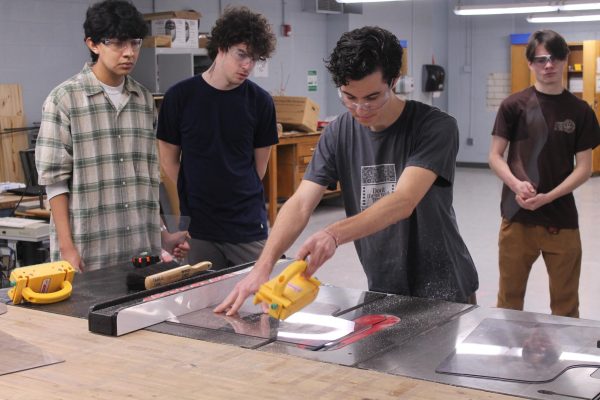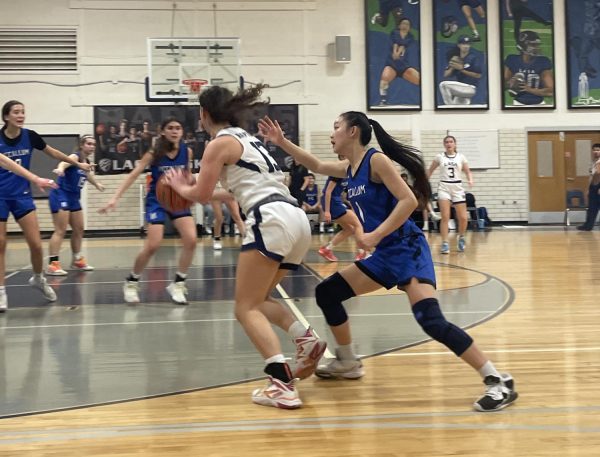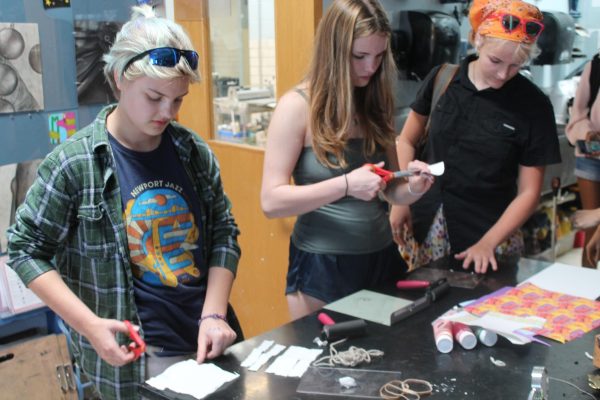Shadows Observe Stupendous Students
March 28, 2022
Shadowing, which happens every year around January and February, allows for current eighth graders, freshmen, sophomores, and juniors to experience the LASA campus, classes, and student population. This process can help these students determine if they feel that LASA is a proper fit for their interests and their academic capabilities.
LASA director Andy Paulson oversees the shadowing process and explained how students can become eligible to shadow. Once someone completes the application to get in, they can sign up and pick a date to shadow.
“We do it for anybody that’s not here, so eighth through eleventh grade,” Paulson said. “If you want to shadow, it’s a good way to come to LASA and enjoy a day at school to decide if you truly want to be in this challenging academic environment or maybe it’s not for you.”
On the day that a student comes to LASA to shadow, they arrive at LASA and meet the LASA student assigned to them based on their interests and grade level. Shadows then have the experience of attending a full day at LASA including classes, lunch, and walking the halls.
“You can see the school in action,” Paulson said. “We try to partner you up with somebody that has an elective that you’re interested in. So, if you’re interested in band or orchestra or athletics, we try to partner up with somebody there so you can see the classes you would be in the following year. It’s just kind of a hands-on experience.”
Current sophomores are the most recent class to have had the opportunity to shadow, given the suspension of shadowing due to the COVID-19 pandemic, and they have mixed feelings about the shadowing experience. Many sophomores feel as though witnessing the social environment had the largest impact on their decision to attend LASA, such as sophomore Basmala Shafi. Shafi thought that while visiting, shadows get a general idea of the school and classes, but the real benefit is talking to the people.
“You get a feel for the general energy of the school,” Shafi said. “I think honestly, the best benefit of shadowing is getting to talk to the people at the school, not experiencing the classes.”
Sophomore Will Basham also shadowed as an eighth-grader. Coming from Kealing Middle School, he appreciated the feel of school and the benefits of getting a taste of the social environment.
“It was nice because as a middle schooler, you don’t exactly know what the high school experience is going to be like,” Basham said. “ It was like a little preview introduction to that.”
Some sophomores, such as Evelyn Constant, felt that her experience shadowing gave more of a picture of the academic life on campus. She appreciated being able to form her own opinions through experiencing the school firsthand rather than just hearing about it.
“You get to meet the teachers,” Constant said. “And once you meet the teachers, then you can see which subjects you like the best. And when you follow your shadow around, you get to actually integrate yourself into the class and participate in everything. So you get to see what you like, and you just get to form your own perspective and ideas. And then you can figure out if it’s the best way to go if that’s where you want to go for high school.”
According to sophomore Nitya Vergis, the real question is the level of accuracy in shadowing as a representation of LASA, which has mixed opinions from students. Vergis thought shadowing was not accurate to the realities of attending LASA as a student.
“It was not an accurate representation because of what we did on that day,” Vergis said. “We did nothing in the classes. So I feel like it depends on what day you shadow. If you go on a day that teachers just let you do nothing, you don’t really get to see anything.”
Similarly, Basham thought his experience of the classroom environment and teachers didn’t leave an impression or affect his school decision. However, he thought the social environment was similar and accurate to what he experiences as a student now.
“The environment, I would say, is definitely accurate,” Basham said. “There’s like the same comradery and feel of the LASA now that I know. But in terms of classes, they didn’t really leave an impact on me one way or another.”
Sophomore Solomon Moon’s younger brother shadowed last month, and Moon had the same belief as Basham in terms of classes. Even so, Moon thought it was a positive experience for him.
“My brother enjoyed the environment a lot,” Moon said. “He just kind of got turned off by the classes, to be honest, because you have to go through all the boring ones. I think it shaped his decision on whether he wanted to go.”
Sophomore Anna Cecil’s younger brother shadowed as well. She thought his experience was overall positive even though it wasn’t perfect.
“His thoughts were probably like what every person who shadows thinks, like it was very long, very boring,” Cecil said. “However, he did say that he got to enjoy how much freedom high-schoolers got compared to middle-schoolers, like walking around at lunch. He said that he got a sense, not necessarily of classroom life, but just general life at the school and what people are like.”
Paulson looks to increase the shadowing process in future years. He and students agree there are significant benefits, even if it’s just to experience the environment of LASA before attending.
“Nobody likes to go somewhere different where they don’t know anybody for a day,” Paulson said. “That’s a challenging, sort of atmosphere, environment to be in. It’s not a perfect example of a day at LASA, but I think shadowing is a great experience for kids to get in and to find out if they like the environment or not.”






